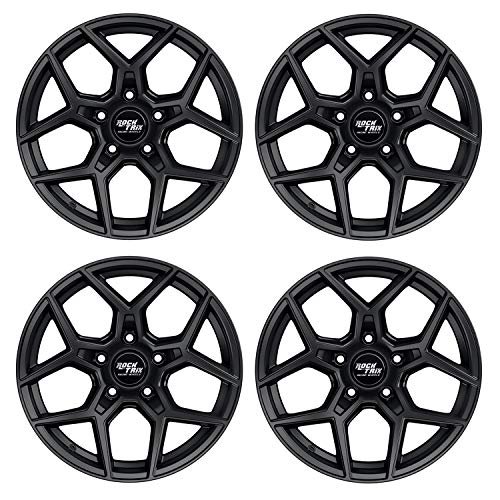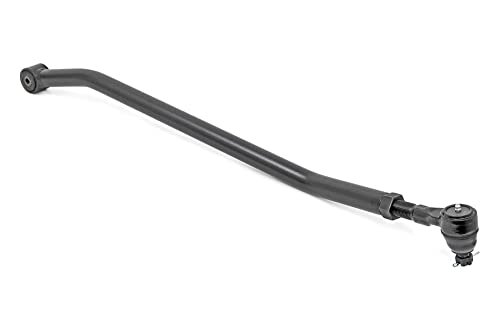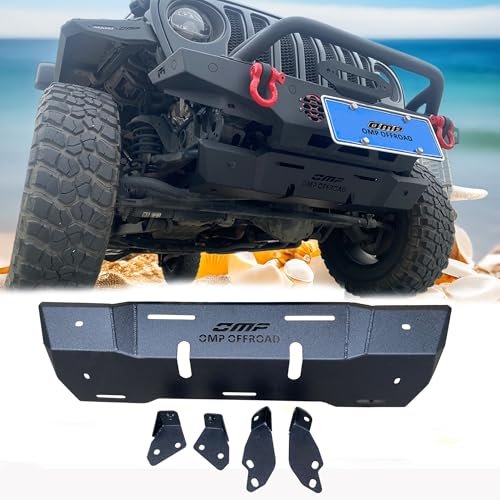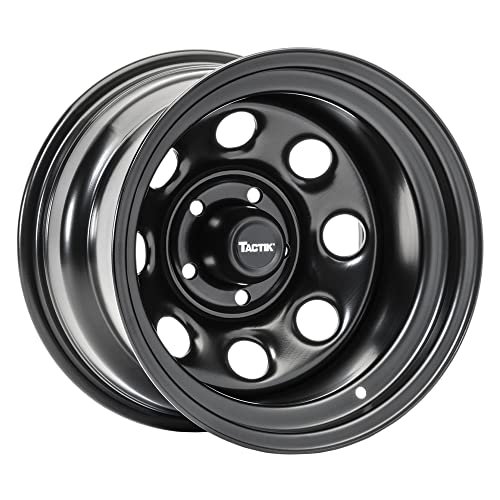Your Jeep sways side to side due to potential issues with the suspension system or steering components. Addressing these issues is crucial to ensure a safe and stable driving experience.
Introducing a swaying motion in any vehicle can be concerning, but it is particularly important to address when it comes to a Jeep. The swaying motion can be caused by various factors, such as problems with the suspension system or steering components.
It is crucial to diagnose and resolve these issues promptly to ensure a safe and stable driving experience. By understanding the possible causes and seeking appropriate solutions, you can address the swaying motion and enjoy a smoother ride in your Jeep.
What Causes Jeep Sway?
Jeep sway is a common issue that many Jeep owners experience. There are several factors that can contribute to this side-to-side movement, including:
| Incorrect Tire Pressure: | Having improper tire pressure can affect the stability of your Jeep. Overinflated or underinflated tires can lead to uneven weight distribution and cause swaying. |
| Worn or Damaged Shocks and Struts: | If your shocks and struts are worn or damaged, they may not be able to effectively absorb the vibrations and movements of your Jeep, leading to swaying. |
| Misalignment Issues: | Misaligned wheels can result in an uneven distribution of weight and cause your Jeep to sway from side to side. |
| Suspension Modifications: | If you have made any modifications to your Jeep’s suspension system, such as lifting or lowering it, without proper adjustments, it can affect the stability and contribute to swaying. |
| Overloading the Vehicle: | Carrying excessive weight in your Jeep can put strain on the suspension system, causing it to become unstable and lead to swaying. |
It’s important to address these issues to ensure your Jeep operates safely and smoothly. Regular maintenance and inspections, including checking tire pressure, replacing worn shocks and struts, and aligning the wheels, can help mitigate swaying and provide a more stable driving experience.
Identifying The Symptoms Of Jeep Sway
Identify the symptoms of Jeep sway by observing side-to-side movements while driving, potential uneven tire wear, steering wheel vibrations, or a feeling of instability. Addressing the underlying causes such as worn-out shocks, suspension issues, or improper tire inflation can resolve this problem and improve the overall driving experience.
Why Does My Jeep Sway Side To Side
Jeep sway, characterized by the feeling of being tossed around, is a common issue that many Jeep owners experience. Excessive body roll, lack of stability on the road, and uneven tire wear are all indicators of this problem.
Excessive body roll refers to the lateral movement of the vehicle during sharp turns or sudden maneuvers, causing a sensation of instability. This can be caused by worn-out suspension components, inadequate sway bar links, or improper tire pressure.
Lack of stability on the road is another symptom of Jeep sway. It can make your vehicle feel floaty or unstable, especially at high speeds or when driving on uneven terrain. This can be attributed to worn-out shocks or worn suspension bushings.
Uneven tire wear is yet another sign of Jeep sway. If you notice that your tires are wearing unevenly, especially on the outer edges, it could be due to an alignment issue caused by sway.
Tips To Prevent Or Minimize Jeep Sway
Jeep sway side to side is a common issue that many Jeep owners face. It can be a result of various factors, including incorrect tire pressure, suspension issues, improper weight distribution, excessive speeds, and worn-out shocks and struts.
Maintaining correct tire pressure is crucial in preventing or minimizing Jeep sway. Regularly inspecting and maintaining the suspension system can help identify and fix any potential problems. Proper weight distribution and loading techniques are essential to ensure the vehicle’s stability and prevent swaying. Avoiding excessive speeds and sudden maneuvers can also reduce the chance of experiencing sway.
Investing in quality shocks and struts is another effective way to prevent Jeep sway. These components play a significant role in stabilizing the vehicle and absorbing shocks from uneven surfaces. By choosing high-quality shocks and struts, Jeep owners can improve their driving experience and reduce sway.

Credit: www.ebay.com
The Importance Of Proper Diagnosis
Having your Jeep sway side to side can be a frustrating experience, but it’s important to address the issue to ensure your safety on the road. Consulting with a professional mechanic is crucial in determining the cause of the swaying motion. Their expertise and experience will help you understand potential underlying problems that could be contributing to the issue.
Avoiding costly and ineffective repairs is another reason why a proper diagnosis is crucial. By accurately identifying the root cause of the swaying, you can prevent unnecessary expenses and wasted time on ineffective repairs. Trusting a professional mechanic can save you money in the long run.
Remember, a professional diagnosis is the first step towards resolving the swaying issue in your Jeep. So, don’t delay in seeking expert help to get back to a smooth and safe driving experience.
Potential Solutions For Jeep Sway
When it comes to addressing the issue of why your Jeep sways side to side, there are a few potential solutions that may help. One common cause of this problem is tire realignment and balancing. Ensuring that your tires are properly aligned and balanced can greatly improve the stability of your Jeep. Another factor to consider is the replacement of worn or damaged shocks and struts. Over time, these components can become worn out and lose their effectiveness, leading to sway. Upgrading or modifying your suspension system can also provide added stability and reduce sway. Additionally, misalignment issues should be addressed promptly, as they can contribute to side-to-side rocking. It is important to have these solutions professionally installed to ensure they are done correctly and safely.
Diy Fixes For Minor Jeep Sway Issues
Jeep swaying side to side can be a concerning issue, but it’s often manageable with some simple DIY fixes. Checking and adjusting tire pressure is the first step to address sway problems. Make sure your tires are inflated to the recommended pressure levels, as under or over-inflated tires can contribute to swaying.
Perform visual inspections to identify any signs of damage or wear on your tires, suspension components, and steering parts. Look for uneven wear patterns, bulges, or cracks that indicate potential issues.
To prevent swaying, basic suspension maintenance techniques can be beneficial. Regularly inspect and tighten suspension bolts, replace worn-out bushings, and ensure all suspension components are in good condition.
Simple DIY realignment methods can also aid in reducing sway. Adjusting the toe, camber, and caster angles of your wheels can improve stability. However, it’s crucial to consult a professional if you’re unsure about realignment procedures.
Suspension Upgrade Options
If you’ve noticed your Jeep swaying side to side, it may be time to consider a suspension upgrade. There are several options available that can improve the stability and handling of your vehicle.
One option is to install a lift kit or leveling kit. These kits raise the height of your Jeep, giving you more ground clearance and allowing you to fit larger tires. This can help reduce sway and improve overall stability.
Another option is to add stabilizer bars or sway bar disconnects. These components help to control body roll and sway by distributing weight more evenly between the two sides of your Jeep. They can significantly improve the handling and reduce the side-to-side motion.
Upgrading to performance shocks and struts can also make a difference. These components provide better damping and control, reducing sway and improving ride quality. They are particularly effective when combined with other suspension upgrades.
Lastly, adjustable control arms allow you to fine-tune your suspension geometry. By adjusting the length and angle of the arms, you can optimize the suspension setup for your specific driving conditions. This can help reduce sway and improve overall stability.
Achieving Optimal Off-roading Performance
Off-roading in a Jeep can be exhilarating, but if you’re experiencing side-to-side swaying, it’s important to understand the factors impacting stability. One key aspect is tire selection. Choosing the right tires can greatly enhance stability on rough terrains. Opt for tires with a larger tread pattern for improved traction and stability.
Another factor to consider is the addition of skid plates and armor upgrades. These protective components can prevent damage to crucial parts of your Jeep, such as the undercarriage, fuel tank, and suspension. By fortifying your Jeep, you’ll have greater peace of mind while navigating challenging trails.
Additionally, practicing proper off-roading techniques and training is crucial. Techniques like controlling throttle and steering input, maintaining a steady speed, and distributing weight evenly can significantly reduce side-to-side swaying. Investing in off-road training programs can provide valuable skills and knowledge to enhance your off-roading experience. So, optimize your off-roading performance by selecting the right tires, enhancing your Jeep’s protection, and acquiring proper off-roading training.
Regular Maintenance Practices For Long-term Stability
Regular maintenance is crucial for ensuring the long-term stability of your Jeep and preventing side-to-side swaying. Routine inspection of suspension components is essential to identify any worn or damaged parts that may contribute to the issue. Tire rotation and balancing play a significant role in maintaining even wear across all the tires, which can help prevent swaying. It is vital to check and adjust alignment regularly, as misaligned wheels can cause instability and lead to swaying. Following the professional maintenance schedules provided by your Jeep manufacturer is crucial to keep all components in optimal condition. By following these simple maintenance practices, you can significantly reduce the chance of your Jeep swaying side to side and ensure a smooth and safe driving experience.
Frequently Asked Questions For Why Does My Jeep Sway Side To Side
Why Does My Jeep Move Side To Side?
Your Jeep may move side to side due to issues with the suspension or tire alignment. It’s crucial to have a professional inspect these components to ensure they’re properly adjusted and in good condition. Proper maintenance can help improve the stability and handling of your Jeep.
Why Does My Jeep Sway When I Hit A Bump?
Your Jeep sways when you hit a bump due to a potential issue with your suspension system. This can be caused by worn-out shocks or struts, loose or broken sway bar links, or improper alignment. It is crucial to have a professional inspect and address the problem to ensure your safety and prevent further damage.
What Do Sway Bar Links Do On A Jeep?
Sway bar links on a Jeep help stabilize the vehicle during turns and prevent excessive body roll. They connect the sway bar to the suspension components, improving handling and reducing the risk of rollovers. Sway bar links are essential for off-roading and overall driving safety.
Why Does My Jeep Sway Side To Side?
When your Jeep sways side to side, it could be due to worn-out suspension components, imbalanced tires, or a misaligned steering system. Getting a professional inspection can help identify the specific cause and recommend necessary repairs to ensure a safe and smooth ride.
Conclusion
To sum it up, if your Jeep is swaying side to side, it could be due to a variety of factors. From worn-out suspension components to improper tire pressure, identifying the root cause is crucial for ensuring your safety on the road.
By regularly inspecting and maintaining your Jeep’s suspension system, and addressing any potential issues promptly, you can enjoy a smoother and safer driving experience. Don’t forget, consult a professional if you’re unsure or need further assistance. Stay safe and happy travels!







